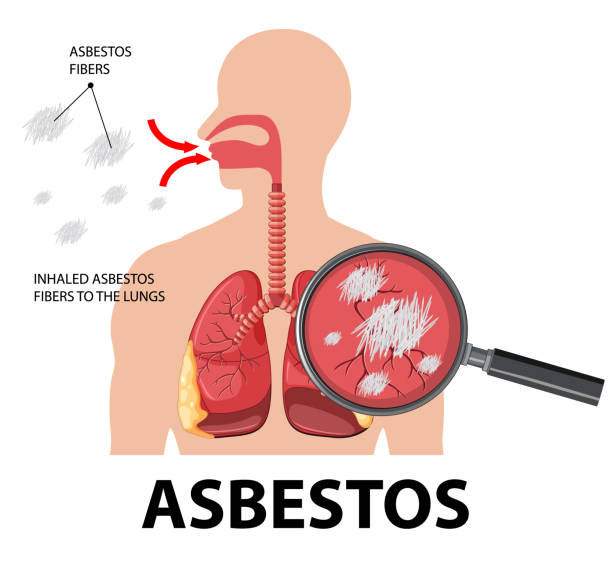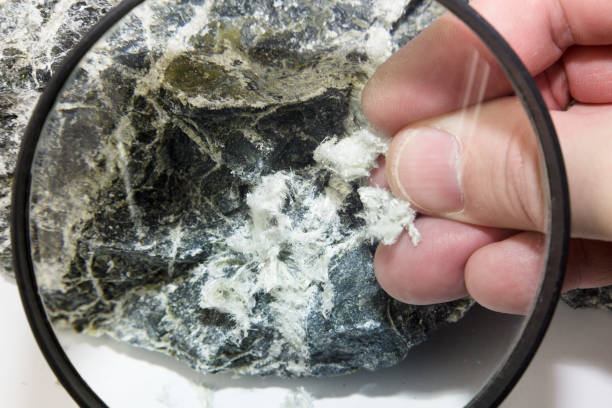Asbestosis is a serious condition and there is no cure, only management of symptoms and prevention of further exposure.
Benign Asbestos-Related Lung Diseases

Benign asbestos-related diseases refer to non-malignant conditions resulting from asbestos exposure. These conditions generally do not lead to cancer but can still significantly affect health.
Key benign asbestos-related diseases include:
Pleural Plaques
These are discrete fibrous or partially calcified thickened areas on the parietal pleura (the outer lining of the lungs and internal chest wall). They are the most common manifestation of asbestos exposure.
Pleural plaques are typically asymptomatic and usually do not impair lung function. However, their presence can be an indicator of past asbestos exposure, which might lead to more serious conditions.
Diffuse Pleural Thickening
Extensive thickening of the pleura may extend over a large area, unlike the localized plaques.
Benign pleural thickening can restrict lung expansion leading to breathlessness and discomfort.
Unlike pleural plaques, diffuse pleural thickening is often associated with a more significant impairment of pulmonary function.
Benign Asbestos Pleural Effusion
An early manifestation of asbestos exposure, characterized by fluid accumulation between the pleural layers. It is the least common of the benign asbestos-related conditions.
Pleural effusions typically present with chest pain and breathlessness. The condition usually resolves on its own, but the effusions can recur.
Monitoring is necessary as it can occasionally lead to more severe conditions like diffuse pleural thickening.
Each of these conditions requires careful monitoring due to the potential for progression to more severe asbestos-related diseases.
Impact Of Asbestos Fiber Type On Asbestosis Development

The impact of asbestos fiber type on the development of asbestosis is significant.
Asbestosis is more strongly associated with certain types of asbestos fibers, which differ in their physical and chemical properties:
Amphibole Asbestos
Includes fibers such as amosite and crocidolite, which are straight, brittle, and have a needle-like shape.
Amphibole fibers are more biopersistent, meaning they stay in the lungs longer due to their resistance to dissolution. This persistence makes them more potent in causing lung diseases, including asbestosis.
Crocidolite, in particular, is considered the most hazardous asbestos fiber type due to its fine, sharp, and thin fibers that penetrate deep into lung tissue.
Chrysotile Asbestos
The most commonly used type of asbestos, chrysotile fibers are serpentine and curly.
Chrysotile is less biopersistent compared to amphiboles and is thought to be less potent in causing asbestosis.
However, it is still capable of causing asbestosis and other lung diseases, especially with high levels of exposure.
The fiber type influences not only the likelihood of developing asbestosis but also the severity and progression of the disease.
Amphibole asbestos is linked with a higher risk of severe asbestosis at lower exposure levels compared to chrysotile.
However, no type of asbestos is safe, and all types can lead to asbestosis and other asbestos-related diseases under sufficient exposure conditions.

